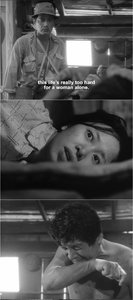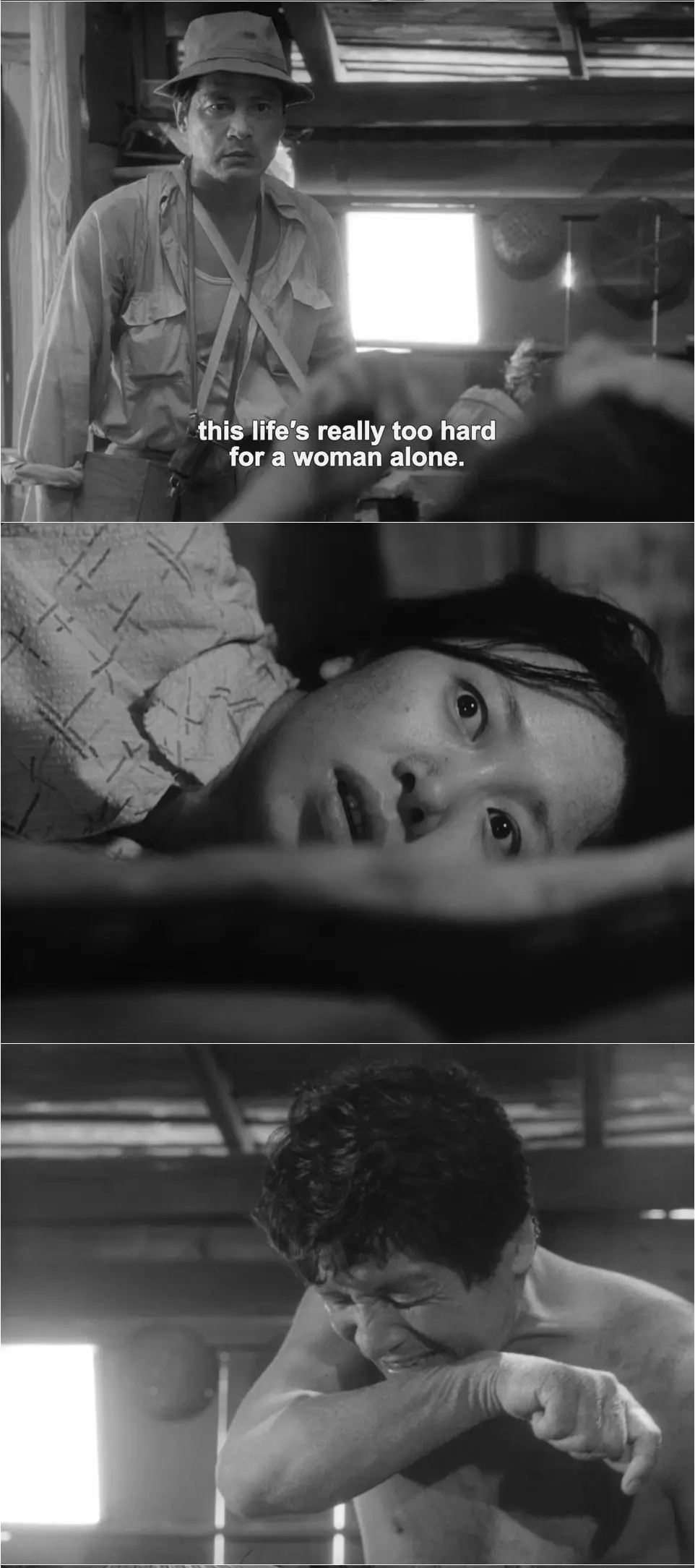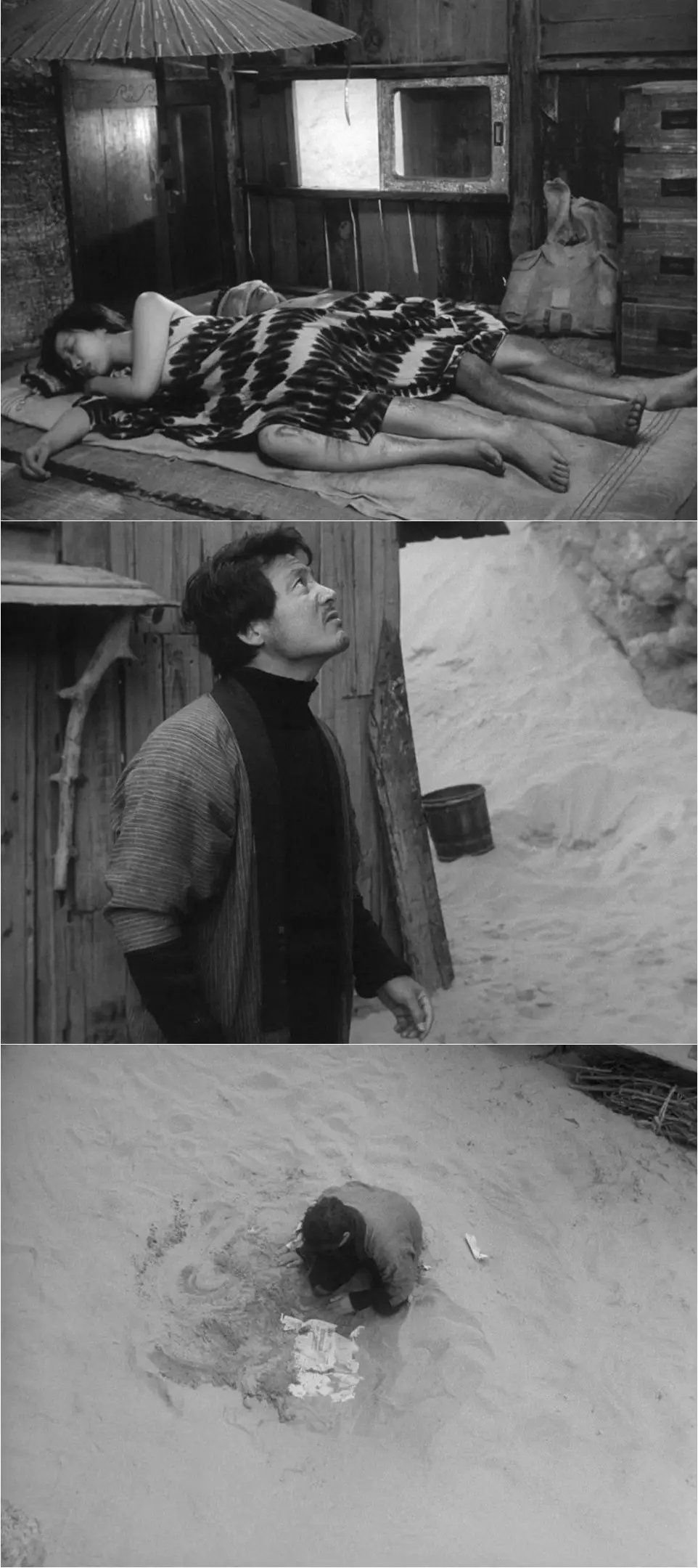Woman in the dunes (1964)
WEBRip 720p | MKV | 960 x 720 | x264 @ 3072 Kbps | 147 min | 3,46 Gb
Audio: Japanese AAC 2.0 @ 128 Kbps | Subs: English hardcoded, Romanian (embedded in MKV)
Genre: Art-house, Drama, Thriller
WEBRip 720p | MKV | 960 x 720 | x264 @ 3072 Kbps | 147 min | 3,46 Gb
Audio: Japanese AAC 2.0 @ 128 Kbps | Subs: English hardcoded, Romanian (embedded in MKV)
Genre: Art-house, Drama, Thriller
One of the sixties’ great international art-house sensations, Woman in the Dunes was for many the grand unveiling of the surreal, idiosyncratic worldview of Hiroshi Teshigahara. Eiji Okada plays an amateur entomologist who has left Tokyo to study an unclassified species of beetle that resides in a remote, vast desert; when he misses his bus back to civilization, he is persuaded to spend the night in the home of a young widow (Kyoko Kishida) who lives in a hut at the bottom of a sand dune. What results is one of cinema’s most bristling, unnerving, and palpably erotic battles of the sexes, as well as a nightmarish depiction of everyday Sisyphean struggle, for which Teshigahara received an Academy Award nomination for best director.
IMDB - 8,3/10 from 8 836 users | Nominated for 2 Oscars + Another 9 wins
In early 1966, when the annual Oscar nominations for best director of the year were announced, Teshigahara might have even made a wry smile. What is surprising to me today is not that a Japanese filmmaker almost unknown in the US was nominated, but that the Motion Picture Academy in 1966 had such a keen aesthetic sense as to appreciate his radical work. "Woman in the Dunes" (Suna no onna) was far ahead of its time, radiating Absolute Beauty.
An entomologist (Eiji Okada) seeks lodging for the night in the dunes, and is led by the villagers to the bottom of a sandpit where he finds a widow (Kyoko Kishida) living in a shack. Next morning he discovers he can no longer climb out. He is expected to remain there and to live with the woman, who needs a man's help. Because the sand drifts into the shack without cease, shoveling sand away from the sandpit is her primary daily routine. After all attempts to escape the situation fail, he becomes accustomed to it and finds another way of life.
It is almost meaningless to try to ascertain any scientific or economic logic beneath the surface of this allegorical story (written by Kobo Abe). Such hairsplitting will only make you lose the merit of this work. The primary subject of the story seems to lie in a certain passive mentality to be called "mental inertia," mental acclimation, conformity, or something like that. "Mental inertia" is caused by "usualness" (or "dailiness"), and comes to dominate the subconscious in due course. Abe and Teshigahara metaphorically depict such "usualness" as the character of sand – usualness formed in an unusual situation.
The woman has a strong mental attachment to the status quo around her; despite the cruel fact that the sand has killed her husband and daughter, she prefers to stay there and not to change her life. This is the "mental inertia" of the work. The entomologist, too. He at first thinks the whole situation surrounding the woman absurd, and tries to escape it. However, he becomes accustomed to the situation day by day, and accepts such absurdity after all. By whom is he forced to do so? The villagers? No. Himself! He chooses to return to the sandpit and stay there even when he becomes free to leave. He becomes a captive in the dunes by "mental inertia" just as he has been in the city.
After seeing this work, I came to feel that many variants of "invisible sand," which might dominate our "free will," are drifting and accumulating around us without cease, whether or not we realize it.
Pictures are great. The sand is living here, showing various expressions. Surely it "acts" as a main character in several impressive scenes, including an unforgettable love scene where the couple is caked with it.
And, music! – if we may call this incomparable sound work so. It not only enhances each scene fully, but also gives life to things that are not expressed in image alone. From barbaric drum music through sensual sound like the sand's "breathing," Takemistu-sound is full of imagination and magic.
A perfect fusion of Image, Sound, and Subject. See "Woman in the Dunes" and die.IMDB Reviewer
(click to enlarge)
My Blog - Check it ;)







